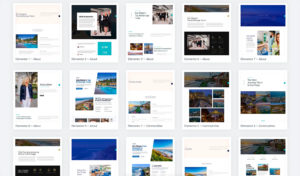Welcome to the world of inbound marketing for real estate agents! This article is designed to help you understand the basics of inbound marketing and how it can benefit your real estate business. The truth is, the world of marketing can be a bit overwhelming, especially for those of us in the real estate industry. But inbound marketing is a game-changer that can help you attract more clients, convert them into leads, and close more deals than ever before. And the best part? It’s all about creating valuable content and building relationships with your audience, rather than interrupting them with pesky ads.
Throughout this article, you will learn about the basics of inbound marketing and how it can be used to benefit your real estate business. We’ll also discuss practical strategies for implementing inbound marketing tactics in your own business, regardless of whether you’re a new agent or a seasoned pro. With the information in this article, you’ll be well on your way to mastering inbound marketing and growing your real estate business.
The Nitty-Gritty of Inbound Marketing for Real Estate Agents
Alright, so you’ve got the basic idea of what inbound marketing is all about, but now it’s time to dive into the nitty-gritty details. By the end of this section, you’ll be a pro at understanding the different stages of inbound marketing and how to use them to your advantage as a real estate agent.
First things first, let’s break down the four stages of inbound marketing:
Attract
The attract stage is all about getting those potential buyers and sellers to your website or social media channels through killer content and search engine optimization.
Convert
The convert stage is about turning those website visitors into leads by getting their contact information through landing pages and forms.
Close
The close stage is about nurturing those leads and closing the deal.
Delight
And finally, the delight stage is about creating a positive customer experience and getting those all-important reviews and referrals.
Now, before you start creating content and optimizing your website, there’s one important step you need to take – creating a buyer persona. A buyer persona is a semi-fictional representation of your ideal customer. By creating a buyer persona, you’ll be able to target the right audience and create content that speaks directly to them. Trust me, it’s a game-changer.
Example:
Name: Sarah Johnson
Age: 32
Occupation: Marketing Manager
Income: $75,000
Location: Urban
Sarah is a busy working mother, looking for her first home. She’s looking for a modern, spacious home with at least three bedrooms, in a walkable neighborhood with easy access to public transportation. She values convenience, sustainability, and style. Willing to pay a premium for a home that meets her preferences.
It’s important to understand that inbound marketing is all about building relationships with your audience. It’s not about interrupting them with ads and promotions. It’s about providing value and building trust.
Attracting Your Audience
Diving deeper into the first stage of inbound marketing – attracting your audience.
First things first, let’s talk about creating valuable content. As a real estate agent, you have a wealth of knowledge about the industry, the local market, and the buying and selling process. Use that knowledge to create valuable content for your audience. This can include blog posts, videos, infographics, and more. The key is to provide value and educate your audience. By doing so, you’ll establish yourself as a trusted authority in the industry and attract potential buyers and sellers to your website.
Next, is search engine optimization (SEO). SEO is the process of optimizing your website to rank higher in search engine results pages (SERPs). When potential buyers and sellers search for real estate-related keywords, you want your website to appear at the top of the SERPs. This can be achieved through on-page optimization, such as including keywords in your content and meta tags, and off-page optimization, such as building backlinks to your website.
Converting Website Visitors into Leads
How to convert those website visitors into leads.
First, landing pages are specific pages on your website that are designed to convert visitors into leads. They should be focused on a specific offer, such as a free home valuation or a guide to buying a home. The key is to keep the design simple and minimalistic, with a clear call-to-action (CTA) that encourages visitors to leave their contact information.
Next, let’s talk about forms. Forms are used to capture the contact information of potential buyers and sellers. They should be placed on landing pages and should be kept as simple as possible. Only ask for the information that is absolutely necessary, such as name, email, and phone number. The less information you ask for, the more likely visitors will be to fill out the form.
Now, I know that creating landing pages and forms can seem like a daunting task, but there are plenty of tools available to help you out. From website builders to form builders, there’s a wide range of options to choose from.
Our top recommendation is Real Estate 7.
Measuring and Analyzing Your Results
How do you measure and analyze your inbound marketing results?
Let’s talk about tracking your progress. There are a variety of tools available to help you track your website traffic, lead generation, and conversions. Google Analytics is a great place to start, as it provides a wealth of data on website traffic, including how many visitors you’re getting, where they’re coming from, and how they’re interacting with your website.
Next, lead generation. You’ll want to track how many leads you’re generating and where they’re coming from. This will help you determine which marketing channels are most effective and where you should be focusing your efforts.
Finally, let’s talk about conversions. You’ll want to track how many of your leads are converting into clients. This will help you determine the effectiveness of your lead nurturing efforts and where you should be focusing your efforts to improve conversion rates.
Now, I know that tracking your progress and analyzing your data can seem like a daunting task, but it’s essential to the success of your inbound marketing efforts. By regularly monitoring your progress, you’ll be able to identify areas for improvement and make data-driven decisions to improve your marketing strategy.
Conclusion
Well, there you have it – everything you need to know about inbound marketing for real estate agents. We’ve covered a lot of ground in this article, from understanding the basics of inbound marketing to measuring and analyzing your results. I hope that you’ve found it to be engaging and easy to read.
Inbound marketing is a powerful tool for real estate agents, but it’s important to remember that it’s not a one-time thing. It’s a continuous process of attracting, nurturing, and converting leads. To be successful, you’ll need to commit to the process and make it a part of your daily routine.



